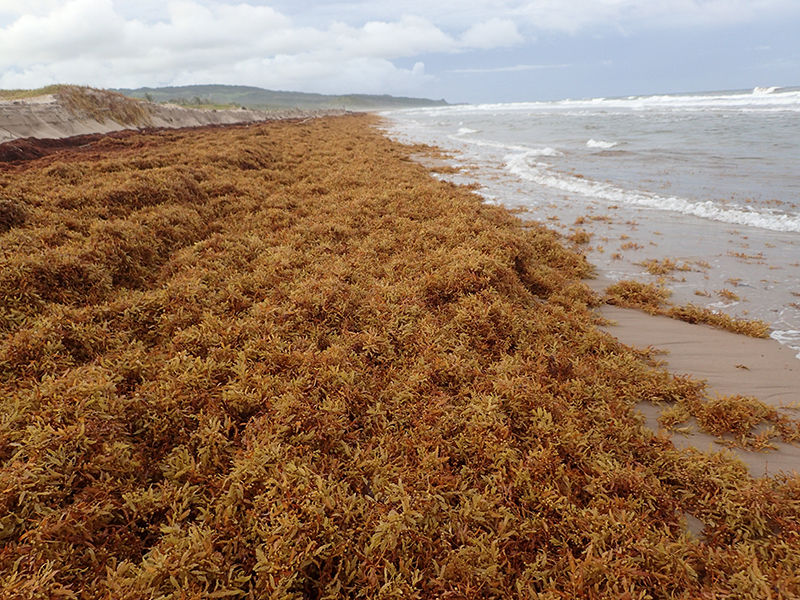Sargassum Alert!Origin Identified?
- Mark Dworkin
- May 7
- 3 min read
M.A. Dworkin

Record-breaking Sargassum levels are expected to invade the shorelines of the U.S. Virgin Islands and other islands in the Caribbean Sea beginning in the month of May 2025. According to a report issued by Optical Oceanography Lab at the University of South Florida (USF), record high levels of the ultra-smelly algae have been recorded in the Eastern Caribbean Sea and Western Atlantic.
“Sargassum inundation will continue to occur in most of the Caribbean nations and islands as well as the southeast coast of Florida,” the report states.
In 2022, the U.S. Virgin Islands Department of Planning and Natural Resources (DPNR) estimated that it was costing approximately $25,000 a day to remove the Sargassum that was quickly piling up along beaches and shorelines across the Territory.
The horrifying, rotten-egg stink drove customers out of Virgin Islands outdoor restaurants, swimmers off its beaches, and tourists back to their hotel rooms to find safety in air-conditioned surroundings. Sargassum that is left to rot on beaches produces hydrogen sulfide, a corrosive, flammable gas. High concentrations of this chemical can peel paint off metal surfaces and has the possibility of causing respiratory problems to those who inhale it on a regular basis.
The Great Atlantic Sargassum Belt has puzzled researchers since its initial invasion in 2011. But a recent study published in Nature Communications may have identified what drove a tipping point that established the phenomenon in the Tropical Atlantic Ocean.
Using computer modeling, a team of international researchers demonstrated that sargassum blooms were brought to the Tropics by strong ocean currents and winds, and were able to thrive in what amounted to ideal growing conditions.
Specifically, two consecutive years of a strong negative North Atlantic Oscillation (NAO), a shift in atmospheric pressure over the Atlantic that changes circulation and wind patterns, pushed sargassum into the Tropics starting in 2009. There, it found warm, nutrient-rich waters and lots of sunlight year-round.
“At first, we just saw a few patches of sargassum being pushed south by the NAO,” said co-author Frank Muller-Karger, Distinguished University Professor and Biological Oceanographer at the USF College of Marine Science. “But these algae patches were met with the right conditions to grow and perpetuate blooms.”
Sargassum is a brown-colored floating macroalgae that has inundated beaches in the Caribbean since 2011. When it washes ashore it can darken to a dark brown or even black as it dries. All reports of its stinky invasion are unified in their conclusion, that sargassum impacts tourism, harms the health of humans and the health of marine life; and that it costs local governments millions of dollars per year to clean up.
Up until this recent theory by the USF, which is being widely accepted, scientists have been divided on the causes of the Great Atlantic Sargassum Belt.
Several companies are currently at work on preventing sargassum from making its way to the shorelines and beaches. One of them involves “floating aquatic plant blooms,” which are designed to control the impact of sargassum, seaweed, algae and other invasive marine plants by protecting lakes, beaches and hotels along the shoreline. These barriers can either be used seasonally or long-term. Their design and perimeter layouts are intended to deflect or redirect invasive marine plants.
Another company is working to domesticate sargassum by capturing it before it reaches the shores and harvesting and growing it into a retail product that will replace fossil fuels, including bioplastics, fertilizers and emulsifiers.
For those who have to smell the algae on a daily basis, whose businesses and livelihoods have been disrupted, the solutions to the stinky problem couldn’t come soon enough.



